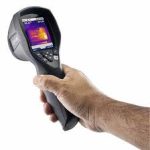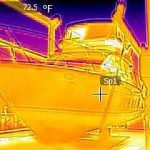 When it comes to ensuring the safety and reliability of a vessel, one of the most crucial components to inspect is the steering system. As a marine surveyor in the 33463 area, it is imperative to conduct a comprehensive inspection of the steering system to identify any potential issues or areas of concern. Suncoast Marine Surveying is well-equipped to provide thorough and detailed inspections of steering systems to ensure the seaworthiness of vessels in the 33463 region.
When it comes to ensuring the safety and reliability of a vessel, one of the most crucial components to inspect is the steering system. As a marine surveyor in the 33463 area, it is imperative to conduct a comprehensive inspection of the steering system to identify any potential issues or areas of concern. Suncoast Marine Surveying is well-equipped to provide thorough and detailed inspections of steering systems to ensure the seaworthiness of vessels in the 33463 region.
As a marine surveyor in the 33463 area, it is important to understand the significance of a properly functioning steering system. The steering system is responsible for controlling the direction of the vessel and plays a critical role in ensuring safe navigation on the water. A malfunctioning or compromised steering system can pose serious risks to both the vessel and its occupants, making it essential to conduct regular inspections to detect any potential problems.
When conducting an inspection of the steering system, there are several key components that must be thoroughly evaluated. These include the helm station, hydraulic or mechanical steering mechanisms, cables and pulleys, rudder assembly, and any related connecting hardware. By examining each of these components in detail, a marine surveyor in the 33463 area can identify any signs of wear, damage, or corrosion that may compromise the integrity of the steering system.
Suncoast Marine Surveying understands the importance of a meticulous inspection process when evaluating steering systems. By utilizing advanced technologies and industry best practices, our team of experienced marine surveyors can provide a comprehensive assessment of steering systems to ensure they meet all safety and performance standards. Our goal is to help vessel owners in the 33463 area maintain the highest level of safety and compliance with regard to their steering systems.
During an inspection of the steering system, a marine surveyor must pay close attention to several key factors that could indicate potential issues. These include excessive play or stiffness in the steering wheel, unusual noises or vibrations when turning the wheel, leaks or fluid loss in hydraulic systems, fraying or kinking in cables, and misalignment or damage to rudder components. By identifying and addressing these issues early on, a marine surveyor in the 33463 area can prevent more serious malfunctions from occurring down the line.
In addition to conducting a visual inspection of the steering system, it is also important for a marine surveyor in the 33463 area to perform functional tests to ensure proper operation. This may involve turning the steering wheel through its full range of motion, checking for smooth and consistent response, and verifying that the rudder moves in synchrony with the wheel input. By testing the steering system under realistic conditions, a marine surveyor can confirm its functionality and identify any potential performance deficiencies.
In conclusion, as a marine surveyor in the 33463 area, it is essential to prioritize the inspection of steering systems to maintain the safety and seaworthiness of vessels. Suncoast Marine Surveying is dedicated to providing thorough and detailed assessments of steering systems to ensure they meet all regulatory requirements and industry standards. By partnering with our team of experienced marine surveyors, vessel owners in the 33463 area can rest assured that their steering systems are in optimal condition. Contact Suncoast Marine Surveying today for a comprehensive inspection of your vessel’s steering system.r




 When it comes to purchasing a boat, one of the most important aspects that should never be overlooked is the condition of its steering system. A comprehensive inspection of the steering system is essential to ensure the safety and seaworthiness of the vessel. This is where a qualified
When it comes to purchasing a boat, one of the most important aspects that should never be overlooked is the condition of its steering system. A comprehensive inspection of the steering system is essential to ensure the safety and seaworthiness of the vessel. This is where a qualified  When it comes to ensuring the safety and reliability of a vessel, one crucial aspect that should never be overlooked is the steering system. The steering system is an integral part of any boat or ship, as it allows for precise control and maneuverability on the water. As a
When it comes to ensuring the safety and reliability of a vessel, one crucial aspect that should never be overlooked is the steering system. The steering system is an integral part of any boat or ship, as it allows for precise control and maneuverability on the water. As a 